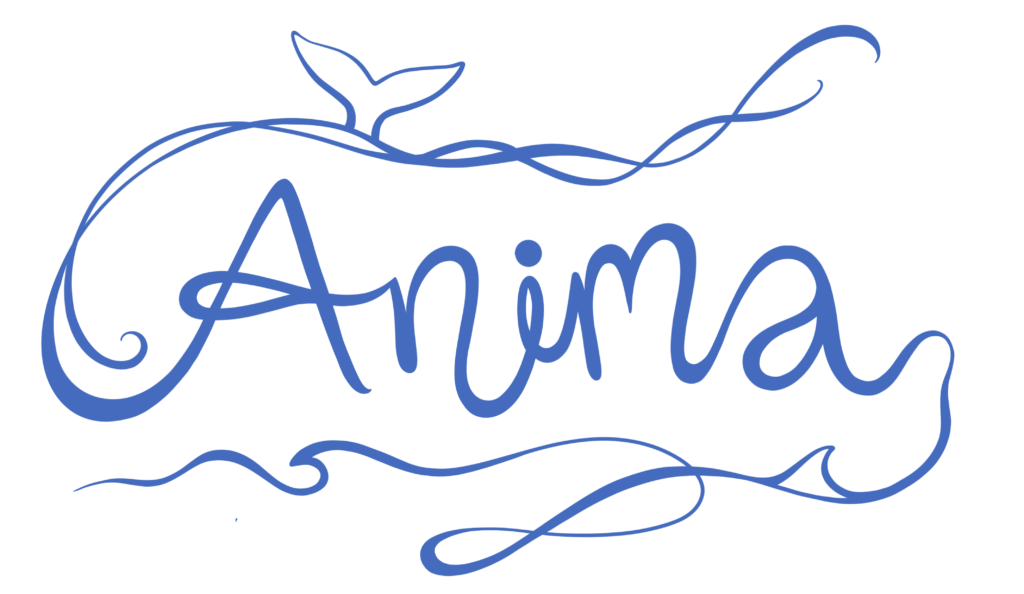The Japan Cetacean Sanctuary
A first step forward to bringing positive change in Japan for dolphins and whales in human care
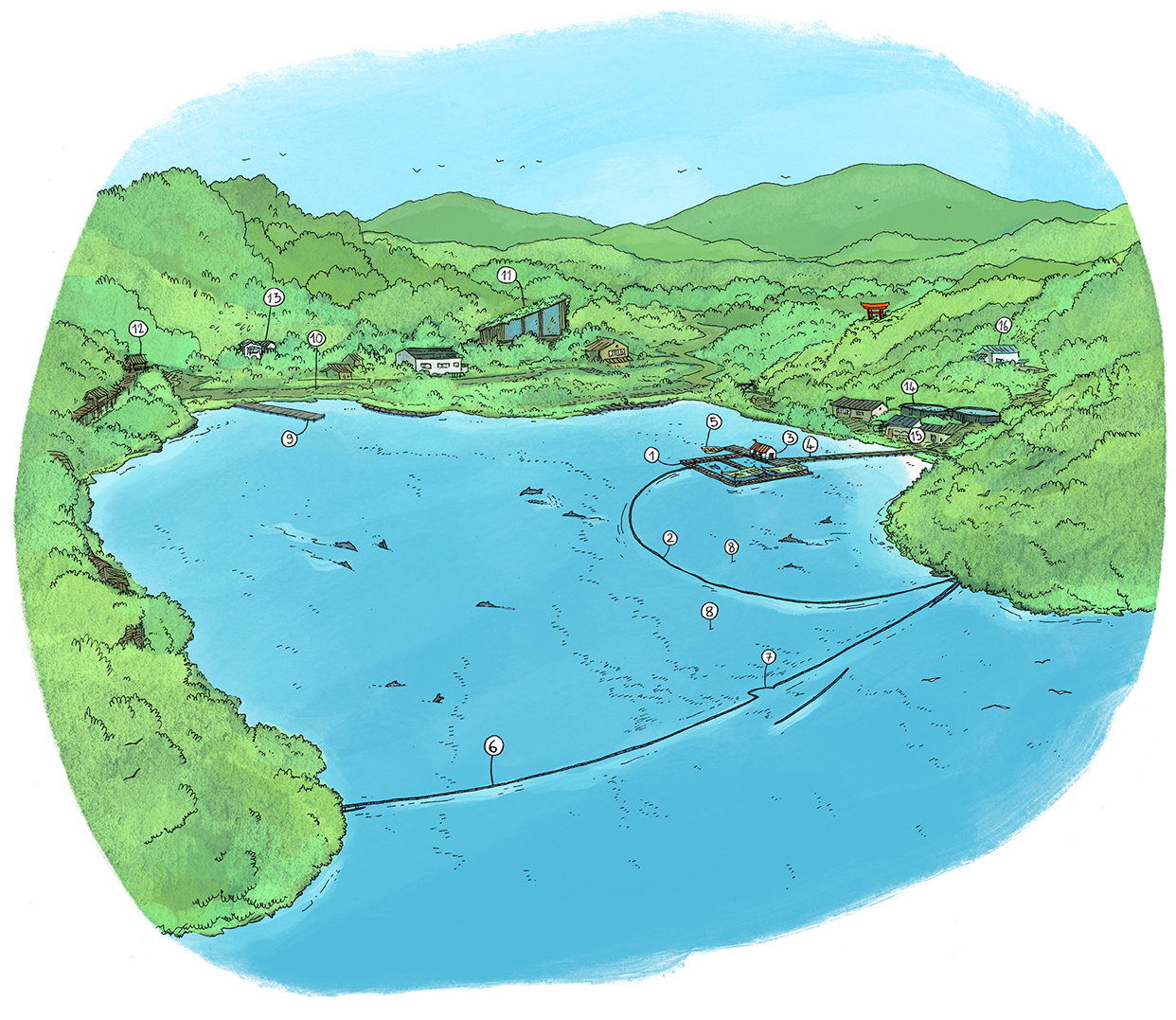

①Seapen/A transitional habitat for: -Newly arrived animals to acclimatize to the sanctuary environment -Animals requiring veterinary care
② Temporary Holding
③ Rest area for staff with shade
④ Dock and Ramp to Floating Docks
⑤ Staff Boat
⑥ Deep Water Net Fence enclosing the mouth of the bay
⑦ Boat Access
⑧ Possibility of partitioning the sanctuary in several netted areas depending on the dolphin’s needs
⑨ Observation jetty for visitors
⑩ Cycling path for visitors
⑪ Education and Cultural Center
⑫ Observation posts for visitors
⑬ Housing and meeting facilities for Sanctuary Staff Members
⑭ Acclimation, medical or emergency care pool i.e Disease isolation, protection from hurricanes
⑮ Food storage (Cooler, Freezer) and Prep Area
⑯ Veterinary facilities and laboratory
Joining the Sanctuary movement
The last decade has been witness to significant scientific advances in the field of animal consciousness and sentience leading to ethical reflections and changes in international law.
A growing number of countries- Bolivia, Croatia, France, India, Canada, Costa Rica, Norway, Switzerland
to name a few- have begun to question the morality and ethics, as well as the physical limitations of cetacean captivity and to move forth in enacting a ban on such practices or phasing it out in the coming years.
Concurrently, this has led to the emergence of a new concept – “sanctuaries” and rehabilitation and release facilities in an enclosed ocean environment for dolphins and small whales “retired” from commercial display.
Our vision is the creation of such a facility in Japan, in awareness and respect of the country’s particular historical, political and cultural context.In contrast with the idea of animal cafes that have soared in popularity in Japan, terrestrial sanctuaries are offering an ethical alternative to responsible animal experiences. For example, in Miyakojima, a native Japanese breed of horses, called Misaki horses, have been designated as a national natural monument in 1953, in a similar manner to the famous deers of Nara. In Miyakojima, the Misaki horses roam wild and free and nature enthusiasts have the opportunity to stroll within the sanctuary while keeping a respectful distance with the animals. The concept of a marine sanctuary on the other hand, although gaining popularity worldwide, is still very foreign in Japan. We have hope that there will come a day when the dolphins and whales of Japan can also be protected as a national natural treasure.
An authentic Rescue and Rehabilitation Sanctuary
We realize our best hope, within the current legislative framework in Japan, is to offer a spacious ocean-setting as close as possible to their natural environment, where the resident dolphins or small whales can remember how to be “themselves” once again (regain their autonomy by relearning the use of their sonar, relearn to hunt live fish) and live out the rest of their lives in dignity and with as much freedom as we can offer them.
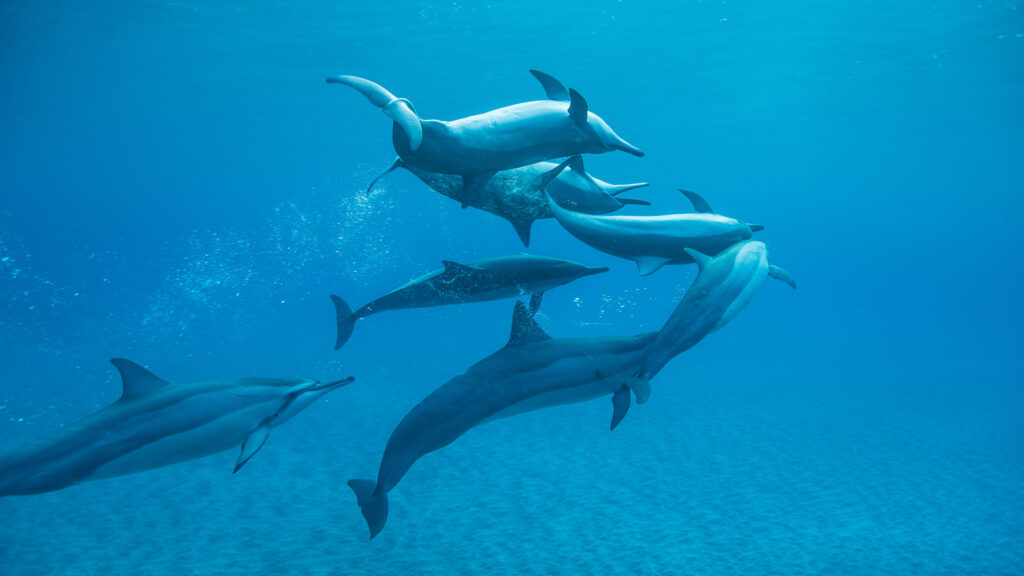
Our Focus
Rehabilitation care for stranded or injured wild dolphins and small whales and assistance in their release when the animal’s physical and psychological condition allows.
The creation of an ocean sanctuary home for former captive dolphins and small whales
Transforming the future of dolphinariums by engaging in constructive and open dialogue with dolphin owners and principals of the cetacean captivity industry in Japan – with possibly inspiring cetacean experience that does not involve live animals.
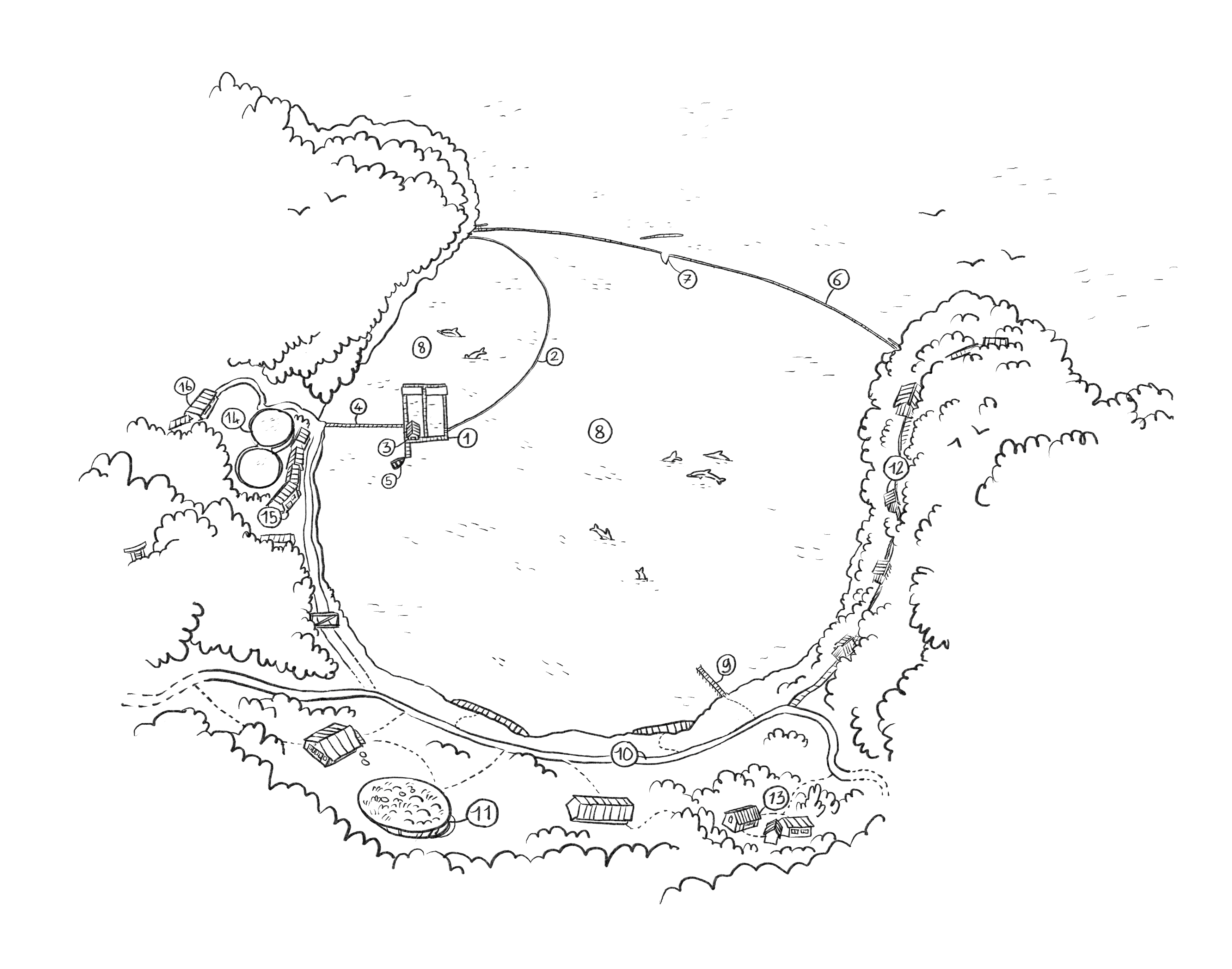


①Seapen/A transitional habitat for: -Newly arrived animals to acclimatize to the sanctuary environment -Animals requiring veterinary care
② Temporary Holding
③ Rest area for staff with shade
④ Dock and Ramp to Floating Docks
⑤ Staff Boat
⑥ Deep Water Net Fence enclosing the mouth of the bay
⑦ Boat Access
⑧ Possibility of partitioning the sanctuary in several netted areas depending on the dolphin’s needs
⑨ Observation jetty for visitors
⑩ Cycling path for visitors
⑪ Education and Cultural Center
⑫ Observation posts for visitors
⑬ Housing and meeting facilities for Sanctuary Staff Members
⑭ Acclimation, medical or emergency care pool i.e Disease isolation, protection from hurricanes
⑮ Food storage (Cooler, Freezer) and Prep Area
⑯ Veterinary facilities and laboratory
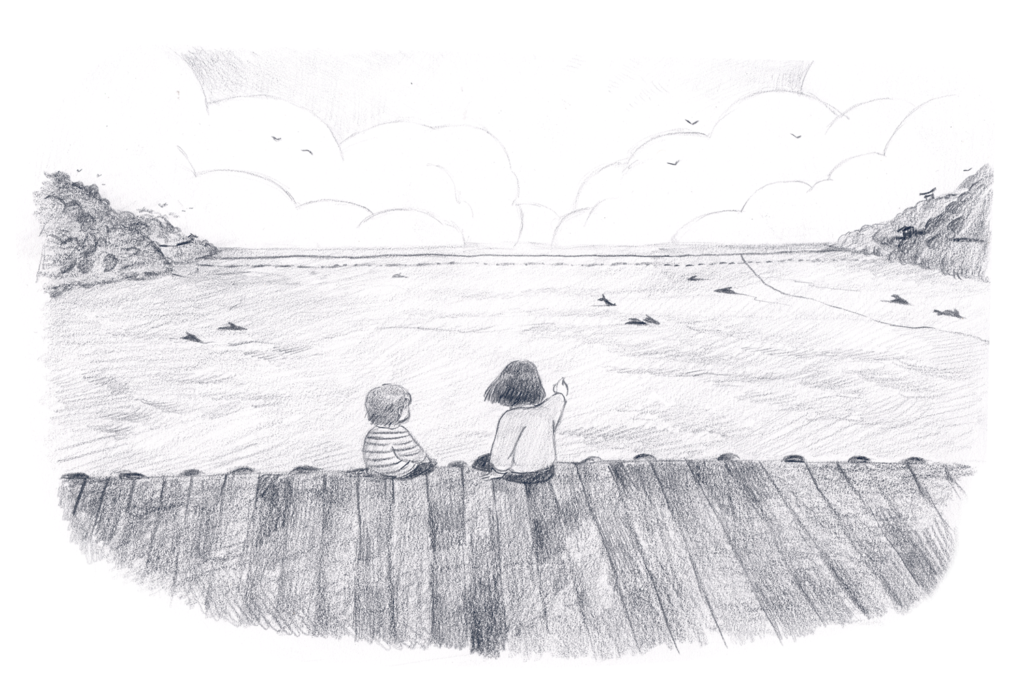

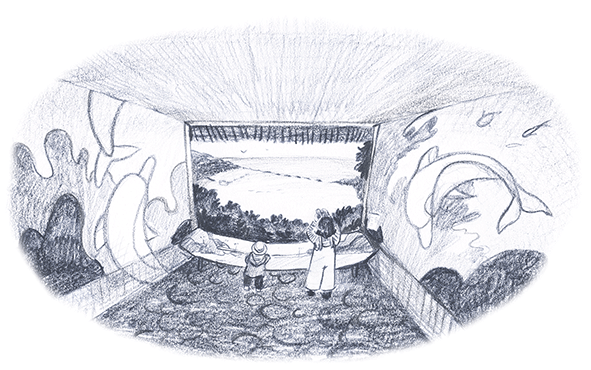
An Educational Opportunity
It is essential that the Sanctuary is not viewed as a tourist attraction, like most existing dolphin facilities in Japan, but a true educational opportunity.
Japan is one of the countries in the world with the greatest number of dolphinariums and knowledge of the general public about the realities and implications of life in captivity for Cetacea is very limited.
We believe that the concept of a sanctuary in and of itself can have a very powerful impact in shifting and expanding popular perception of dolphins and whales.
Adjacent to the Reserve will be a Cultural Center for Applied Science and Art to raise awareness, advance knowledge and scientific research.
In addition to providing educational content on the sanctuary reserve and the individuals (humans and dolphins) present on site, the Center will offer cultural events promoting Arts and Science: art exhibitions, concerts, conferences, children’s and family events on conservation issues dedicated to raising awareness in creative ways about Cetacea consciousness: the complexity of their social structures, emotional intelligence, and language.
Action Steps
What your support will help us accomplish
Site scoping and assessment
Identifying and visiting locations and conducting due diligence using site selection criteria
Legal Review
Research on legislations, special permits and authorizations required to the creation of the Reserve.
Coalition Building
Teaming up with Japanese and International Marine Mammal Scientists and Veterinarians
Outreach to prefectural authorities
Presentation of the project and preliminary discussions with the representatives and decision makers of the prefectures that are susceptible to welcoming the Sanctuary Reserve
Fundraising
concurrent with the previous steps, securing long-term revenue is imperative to support the Reserve in perpetuity.
Thank you so much for your time and interest in our vision. It is an ambitious one and we realize its success will require perseverance, respectful dialogue and creative collaborations with all the different parties involved.
In anticipation of the challenges ahead, we wish to keep in our minds and hearts a broader perpective, in line with seventh generational thinking: our commitment is not only to the dolphins but also to the future generations – human and other than human- and to the Earth which they will inherit.
Please feel free to reach out with any questions, comments or concerns- and ways you would like to become involved in the project.
